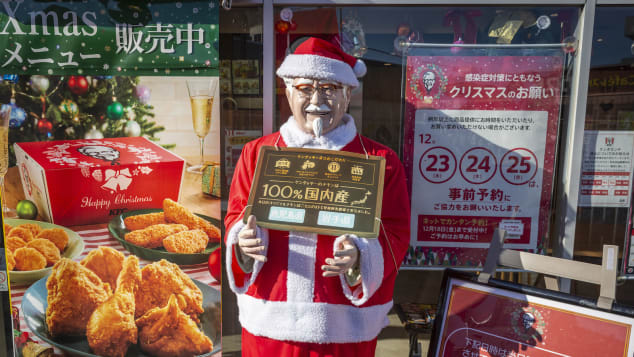
How to Ensure Consistent Branding When Going Global
You don’t need to be big to go global. Ask any of the creators on the online global marketplace Etsy. E-commerce and social media have made it possible to have a global presence without setting up shop in another part of the world. Going global is more than expanding your shipping options. It requires extensive research, planning, along with more things to keep in mind; consistent branding being one of them.
Meeting customers’ demands means you must be flexible, but you can’t compromise your brand’s authenticity. Maintaining consistent branding is beneficial because it affects how audiences view your company. It creates familiarity and fosters trust in your business, products, and services.
Still, going global can be incredible for your business. An increased customer base means you can enjoy increased revenue from these potential customers. If you have a strong brand identity and a dedicated team, taking your business global can proceed smoothly. Here are five best practices to ensure consistent branding when your business goes global.
1. Create Brand Guidelines
Before expanding your business internationally, you should already have a well-established brand identity. Your brand is more than the visual identity of your logo. It’s also the unique impression audiences have of your business that distinguishes it from competitors.
Style guides or branding guidelines are defined rules and standards for how your brand should be represented. They contain both content and visual elements. Branding guidelines ensure brand consistency and demonstrate brand personality.
There are no hard and fast rules to formulating branding guidelines, but they should include:
- Information on brand history, mission, and core values
- Rules on logo usage (design, formats, sizes, fonts, and usage permissions)
- Color palette
- Typeface
- Brand tone of voice
- Iconography/imagery
To avoid branding discrepancies, ensure that your business’ style guide is easily accessible everywhere your company is present. All staff should have a clear understanding of your core brand values.
Businesses with consistent branding can earn 33% more revenue than those with inconsistent branding. Evaluate the marketing materials your global teams produce to see if and where they deviate from your brand identity.
2. Be Aware of Cultural and Language Differences
Before venturing into a new country, it is critical to research the cultural aspects that may affect the reception of your business. Compiling accurate customer personas will give you an idea of the societal differences you will likely encounter.
The most evident cultural element you will contend with is language. Translating a brand’s name, a business slogan, or a corporate contract into another language can be a minefield of embarrassing or offensive miscommunications.
Above is Parker Pen’s advertising that went up in Mexico. The words ‘embarrass’ and ‘embaraza’ look and sound similar. However, ‘embaraza’ means pregnant in Spanish. The English slogan is ‘it won’t leak in your pocket and embarrass you.’ The Spanish translation is ‘it won’t leak in your pocket and make you pregnant.’
Another famous example is when KFC first entered China. The company’s ‘finger-lickin’ good’ slogan translated to ‘eat your fingers off.’ Mercedes Benz’s Chinese brand name, Bensi, translated to ‘rush to die.’ These were transliteration errors where English brand names were localized according to phonetic similarity.
Machine translation software like Google Translate or Microsoft Translator is cheap, fast, and handy for communication with international audiences. But relying on human translators to complement the software is a must.
Language isn’t the only cultural difference to be aware of. Every country has its unique business culture. For example, in many Asian cultures, the workplace is hierarchical based on age and position. Consequently, the flow of information follows those hierarchical lines.
If you work with local partners, such as home/office delivery businesses, it will be beneficial to understand the local business culture to avoid making localization mistakes. Legal assessments are also recommended to avoid breaking local regulations and laws.
3. Focus on your Internal Brand
Branding is how your audience identifies and connects to your company. Your employees are a key demographic of your brand’s audience and also need to feel connected to your brand. Internal branding is how you accomplish that. When employees buy into your brand values, they become compelling brand ambassadors both internally and externally.
Ensuring your employees worldwide are on board with your brand values is crucial to brand consistency. One level of internal branding consists of creating an employee experience around brand values. Let’s say friendly service is a leading brand value. Cultivate a work culture that embodies this value with consideration for workplace cultural differences of global employees.
The other level of internal branding is ensuring employees adhere to the visual style of brand guidelines. For example, say your brand’s font is Arial. Make sure all communication (internal and external) uses that font.
Successful brand consistency will require all staff to be aware of and adhere to brand guidelines. You can achieve this with proper onboarding and training programs, internal brand collateral like company t-shirts, or recurring emails with brand values and style guide updates.
4. Stay Customer-Focused
Your global branding efforts can be flawless, but you will lose sales if you don’t focus on the target audience. Therefore, you must find ways to balance your brand’s authenticity and prospective customers’ expectations.
KFC is a good example. The fast-food brand generally isn’t associated with Christmas. In Japan, however, the brand is synonymous with the holiday. Following the wildly successful ‘Kentucky for Christmas’ campaign, it is customary for families to eat KFC on Christmas day.
KFC Japan capitalized on a lack of Christmas traditions and a passing resemblance to Santa Claus to appeal to the Japanese audience without compromising its brand authenticity.
For your business to appeal to new global customers, you must demonstrate you understand their unique circumstances. You may need to make little adjustments to your brand to better appeal to them. Therefore, it is critical to determine which branding elements can be altered without compromising your brand’s core identity.
5. Optimize your Campaigns
You have probably begun to realize that no two countries’ markets are alike. Each market has its unique culture, competitors, and customers. Therefore, a one size fits all marketing strategy will not work. You may prefer to create universal branding campaigns, but it may work better to tailor them to specific countries’ market realities and customer preferences.
For example, with a social media penetration rate of 85%, a social media marketing campaign stands a good chance of success in Northern Europe. In Southern Asia, the social media penetration rate is 34%. So, marketing efforts through that channel would not be as effective.
You may find that the preferred marketing channel in Colombia is a website. According to Tech In Asia, in Indonesia, it is YouTube.
Marketing isn’t the only business process you need to optimize in your global branding strategy. Employees must have access to branding materials whenever they need them. That is especially true for marketing teams in different time zones. Keep logos, templates, images, and other media in a centralized location. Before scaling, ensure your approval process is clear, simple, and in place.
Internal communication and customer service delivery have to be optimized as well. To avoid inconsistent brand usage, you must invest in translation tools, international call services, cloud platform services, and other business process management tools.
Wrapping Up
Technology has enabled businesses of any size to enjoy global success. But entering new markets is not without its challenges. No two markets are the same. Your business fills a gap in one market, and in another, it is an alternative to other brands. Your ideal customer may even change from one country to another. These differences make consistent branding challenging.
A consistent brand identity is vital to building trust and customer loyalty. Balancing authenticity and adaptability can be achieved by following the practices outlined above. You must have clearly defined and communicated brand guidelines. Your employees need to be on board with your brand guidelines to reduce the likelihood of brand inconsistencies.
As important as consistency is to your brand’s reputation, you cannot ignore customer expectations. Having a customer-centered brand means being sensitive to the cultural differences in new markets. You will need to be open and precise about which elements of your brand can be customized and which cannot.
Oh, and don’t forget to double, no, triple-check the translations.
This article is a contribution by Nico from Crunch Marketing.
Related posts
Localization And Global Expansion: How To Grow your Brand
Top Localization Strategy Examples to Visualize Global Growth

AI Localization: Everything You Need to Know









